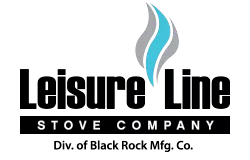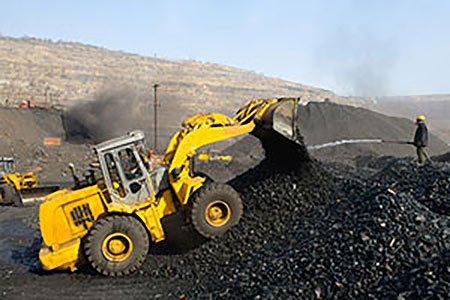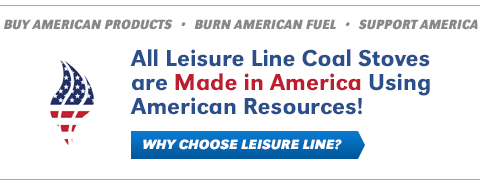Are you bombarded with many messages, from the media, social media and second hand from your family and friends? Do you have trouble determining what information is accurate? I certainly struggle every day to determine the real truth. So I suggest you treat the information provided in this blog post with a healthy dose of skepticism! Many sources provide the message that “coal is on the way out”. I am asked frequently: “Will Coal be Outlawed?”. Is this true? In some ways yes, however you will be able to purchase anthracite coal to heat your home for the foreseeable future. In my opinion you will be warmer for less money if you choose anthracite to heat your home. I will explain why in this blog post and try to give you the information so that you can decide for yourself.
All Coal is not created Equal
Coal contains the energy stored by plants that lived hundreds of millions of years ago in swampy forests. Layers of dirt and rock covered the plants over millions of years. You can classify coal into four main types, or ranks: anthracite, bituminous, subbituminous, and lignite. The ranking depends on the types and amounts of carbon the coal contains and on the amount of heat energy the coal can produce. The rank of a coal deposit is determined by the amount of pressure and heat that acted on the plants over time.
Anthracite
Anthracite contains 86%–97% carbon and generally has the highest heating value of all ranks of coal. Anthracite accounted for less than 1% of the coal mined in the United States in 2020. All of the anthracite mines in the United States are in northeastern Pennsylvania. In the United States, anthracite is mainly used by the metals industry.
Bituminous
Bituminous coal contains 45%–86% carbon. The bituminous coal in the United States is between 100 million and 300 million years old. Bituminous coal is the most abundant rank of coal found in the United States, and it accounted for about 44% of total U.S. coal production in 2020. It is used to generate electricity and is an important fuel and raw material for making coking coal or use in the iron and steel industry. Bituminous coal was produced in at least 18 states in 2020, but five states accounted for about 74% of total bituminous production: West Virginia (28%), Pennsylvania (14%), Illinois (13%), Kentucky (10%), and Indiana (8%).
Subbituminous
Subbituminous coal typically contains 35%–45% carbon, and it has a lower heating value than bituminous coal. Most subbituminous coal in the United States is at least 100 million years old. About 46% of total U.S. coal production in 2020 was subbituminous and about 88% was produced in Wyoming and 8% in Montana. The remainder was produced in Alaska, Colorado, and New Mexico.
Lignite
Lignite contains 25%–35% carbon and has the lowest energy content of all coal ranks. Lignite coal deposits tend to be relatively young and were not subjected to extreme heat or pressure. It is crumbly and has high moisture content, which contributes to its low heating value. Lignite accounted for 9% of total U.S. coal production in 2020. About 54% was mined in North Dakota and about 39% was mined in Texas. The other 7% was produced in Louisiana, Mississippi, and Montana. Lignite is mostly used to generate electricity. A facility in North Dakota also converts lignite to synthetic natural gas that is sent in natural gas pipelines to consumers in the eastern United States.
Source: https://www.eia.gov/energyexplained/coal/
Why Is Anthracite the Best Fuel to Heat Your Home?
You will find anthracite mined only in Pennsylvania. The closer you are to the mine, the better the cost advantage. As a general rule, you should live within 750 miles to achieve the cost savings afforded by burning anthracite to heat your home. Of course you can choose to heat you home with wood. Before you make that choice, take a minute to understand the benefits of anthracite.
Anthracite is hotter, cleaner, cheaper, safer and easier. For the purpose of explanation the following provides the top reasons why this is true:
Hotter
Anthracite coal is more energy dense and burns hotter than wood pellets and cord wood. Wood pellets are 15,000,000 BTU per Ton and cord wood is even less depending on moisture content, anthracite is 25,000,000 BTU per ton, .
Cleaner
Anthracite coal produces no smoke and particulate emissions into the air and is therefore exempt from EPA regulation. Wood and wood pellet burning appliances must be tested to meet EPA regulations for sale in the US.
Cheaper
Average cost per BTU for anthracite coal is less than oil, natural gas, propane, wood and wood pellets. Of course if you have your own wood lot the wood seems to be cheaper. If you consider the cost for equipment, time and handling, even free wood is not free!
Safer
Compared to other heating fuels, anthracite is virtually risk free. No creosote build up, so no chance for a chimney fire as in wood stoves. Easy to store with no chance of fire. No chance of gas or oil leaks and resulting possible fires.
Easier
Anthracite coal is more energy dense which allows longer burn times with less fuel. Available in convenient 40# bags it is easy to handle and store. Also burning appliances require less maintenance due to no creosote build-up. Some wood pellet stoves must be cleaned daily or weekly. Don’t take my word for it, do some research and see for yourself.
What do these features have to do with the question: “Will Coal Be Outlawed?”. Truthfully not much, except that satisfied people who burn anthracite provide a collective positive voice.
Will Coal Be Outlawed For the World Wide Effort to Eliminate Fossil Fuels?
Due to climate change, almost every country in the world seeks to eliminate fossil fuels at some point in the future. We in the United States can see the effect of this policy as higher fossil fuel and electricity costs. It is not feasible to immediately stop extracting and using fossil fuels. The global economy, human health and livelihoods currently depend heavily on oil, coal and gas. But over time, we will need to displace fossil fuels with low-carbon renewable energy sources.
How much fossil fuel do we have left? R/P ratios (that is the ratio of reserves to current rates of production) can predict this on an approximate basis. At the current rates of production, oil will run out in 53 years, natural gas in 54, and coal (bituminous) in 110. This points to a situation that must be corrected in the next 50 years. In other words for many of us, it is a direct impact to our children.
We cannot turn a blind eye to the issue, however fossil fuels will not be eliminated in the near term. Thankfully there is an ever growing effort to solving this issue. Hydro, Solar, Wind, geothermal, ocean thermal, wave action, tidal action, biomass, and hydrogen are all areas of current research. Who know what new ideas will be explored and new technology developed in the coming years?
Am I being Irresponsible by Burning Anthracite to Heat My Home?
This discussion asks the question: “Will Coal Be Outlawed?”. Another question might be is it irresponsible to burn anthracite? As a parent I want to do my part to solve the environmental issues facing all children and young adults. So how does this impulse match up with owning a anthracite burning heating appliance company? I believe that for at least the next 30 years, Anthracite is a viable interim solution to the current situation in the US and world. It is true that anthracite is a fossil fuel. It is considered dirty and not environmentally friendly by many. While it is not renewable it is clean and is not regulated by the EPA for home heating use. It does release greenhouse gases and is on the naughty list for many.
Renewable Energy
Renewable energy is the current term used for fuels that can be replaced in the near term. Clean energy is another term used to create a positive image for a particular fuel. Coal is called dirty, and many other less than flattering terms. Most of this discussion centers around the release of so called greenhouse gasses that are a result of excess carbon released into the atmosphere. Fossil fuels are not only not a renewable fuel source but are also high in carbon emissions. For me, this all means that for a better future we all need to look for and support solutions.
Am I a Bad Person?
So, you may ask yourself: “Am I a bad person for burning anthracite coal?” The quick answer is of course not, most people use fossil fuels to heat their homes in one form or another. It is economical, clean burning and actually has less greenhouse gas emissions than wood according to some studies. All current mining activities are required to restore the land to pristine pastures and woods, therefore current anthracite mines are fixing the damage done by previous mining. Much of the science related to climate change has been politicized, therefore you can find many different points of view in reports and online information regarding the environmental effect of burning anthracite. I encourage you to research this more if you have time.
Alternatives
On the other hand, wood and wood pellets are considered a renewable, clean energy source. Yet these two fuels are heavily regulated by the EPA to ensure that emissions are held to current standards. Also, you will find data that shows a larger carbon footprint for these fuels. My opinion is that you should not automatically assume that burning wood or wood pellets is cleaner energy than anthracite. I encourage you to research this subject for yourself as well.
Conclusion, Will Coal Be Outlawed?
The metal industry uses the largest percentage of of all mined anthracite. As retail consumers, we use the smallest percentage of all anthracite mined. Logically speaking it is unlikely that anthracite will ever be outlawed because of the needs of industry. Of course I do not have a crystal ball available, no telling what changes might be coming.
The good news is that there is a 200 to 300 year supply available in the ground so we certainly will not run out. As new technologies are developed it is clear to see that in 100 years we will be heating our homes very differently than in present times. For that reason I predict that coal will not be outlawed. It is true that the use of anthracite for home heating will gradually phase out as newer and better ways are discovered. In the mean time it is an excellent option for heating your home.
I have provided information in this blog post that only scratches the surface. The short answer is that anthracite coal will be legal to burn and readily available for a long time to come. We should all ask: “should I be using fossil fuels to heat my home?”. I urge you to educate yourself further and make your own choice. In my opinion, if you want an economical solution that keeps Americans working, you can’t beat anthracite.




